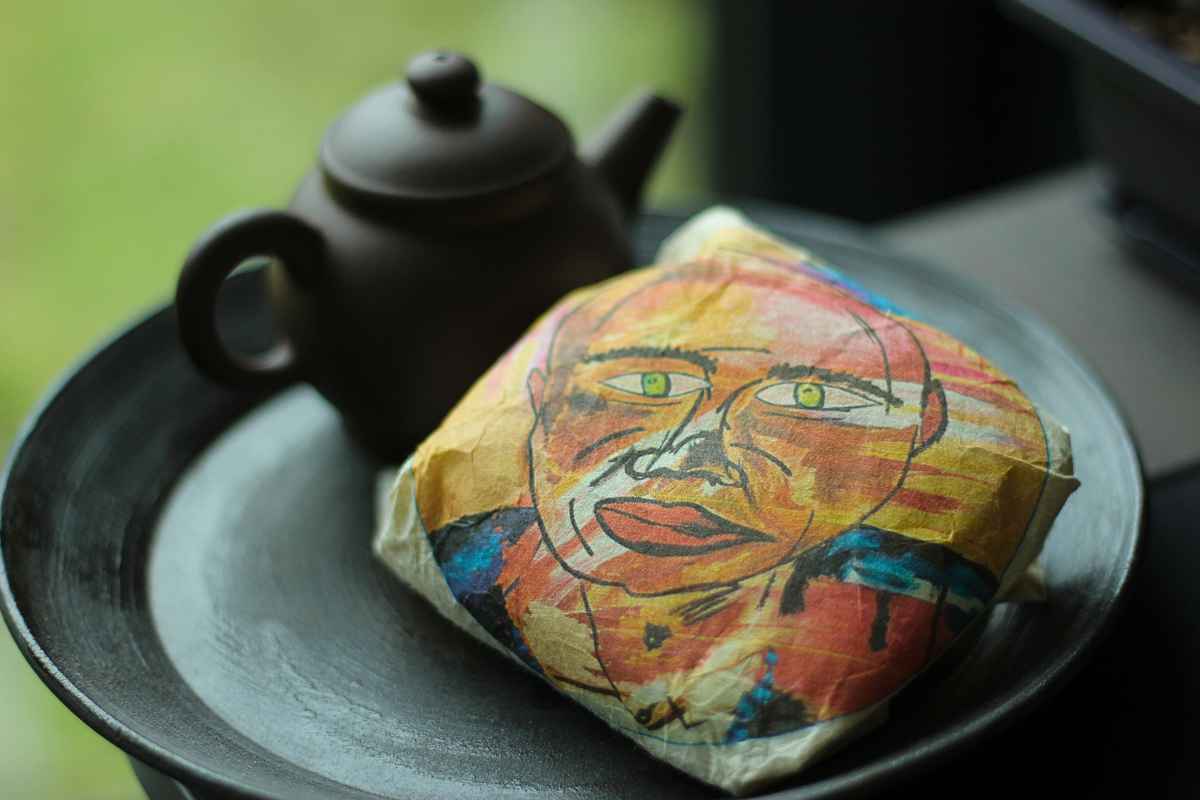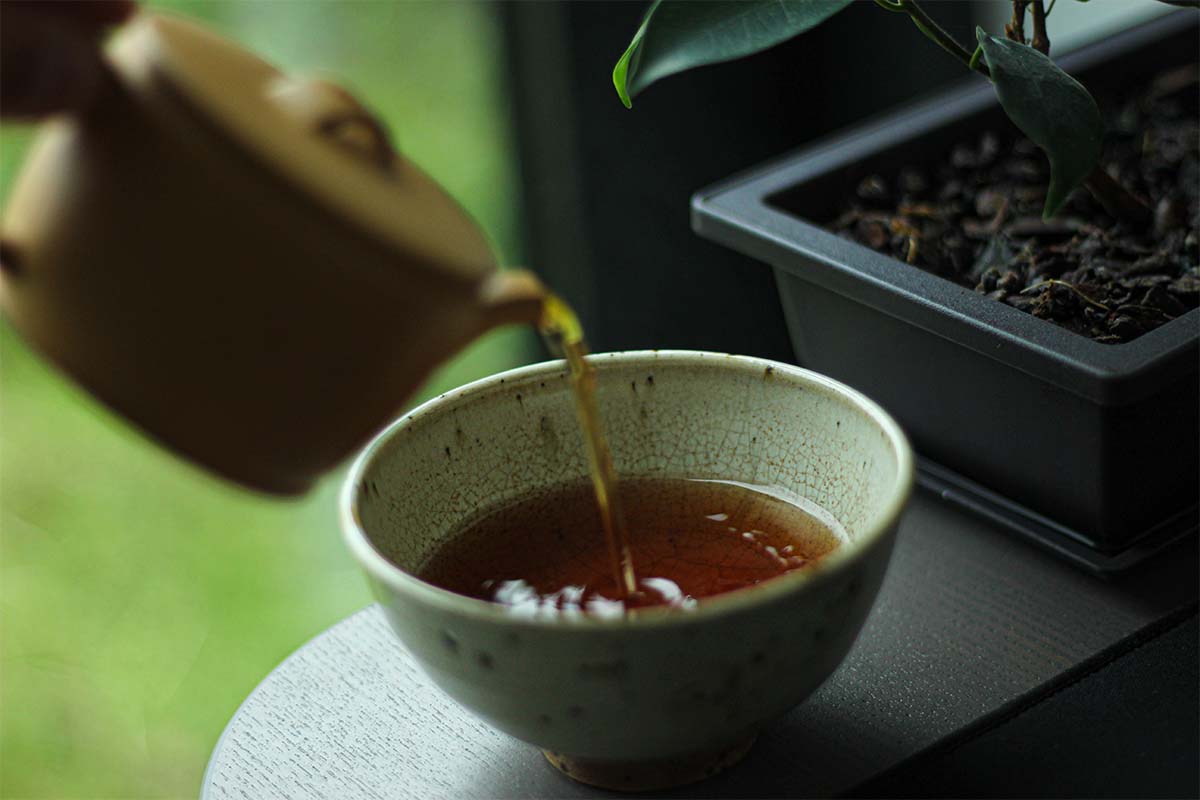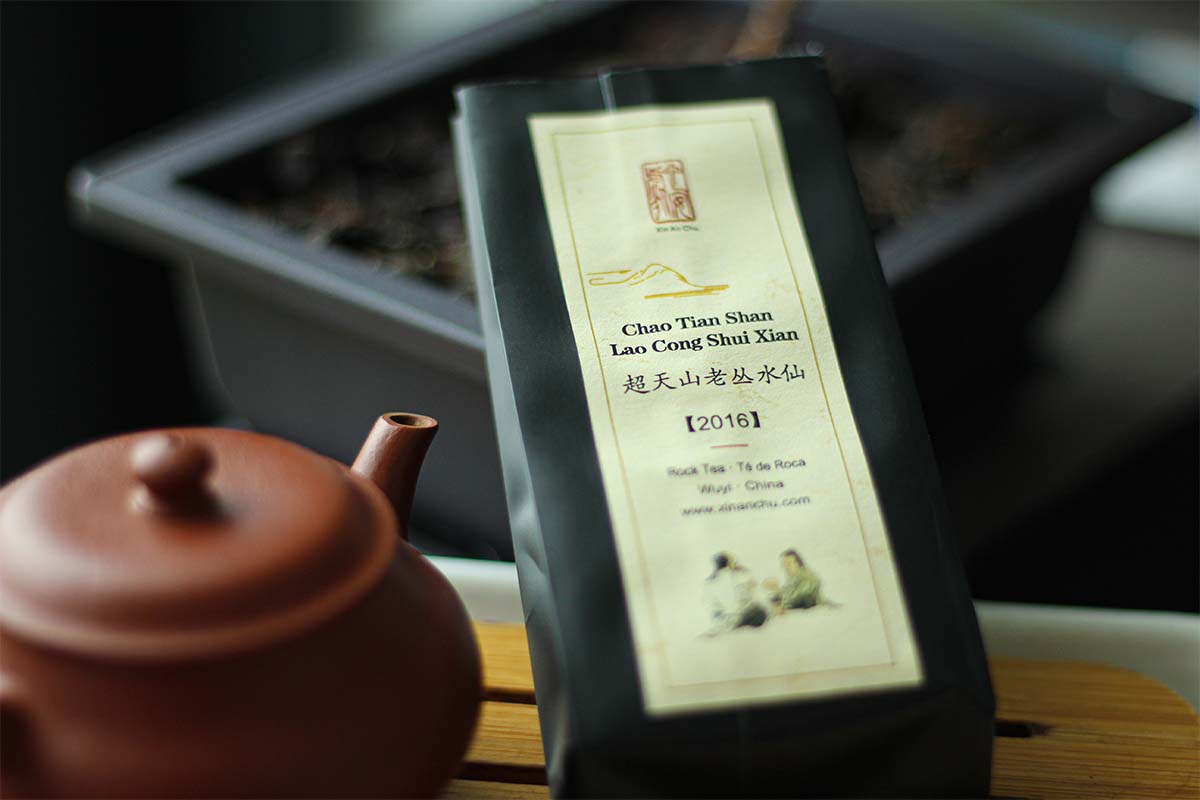Tea is the second most popular drink in the world, only surpassed by water. It is an excellent alternative to coffee and it’s also healthier. Soaking tea leaves in hot water is fairly easy so it’s very convenient to brew yourself a nice cup of tea. In the introductory article about ‘What is Tea?’ you learned that tea is a beverage that is made by pouring hot water over the leaves of a Camellia Sinensis plant.
There are thousands of teas and they all fit into one of the 6 types of tea: white tea, green tea, yellow tea, black/red tea, oolong tea and dark tea. These different types of tea all come from the same plant species but are very different from one another. The difference between these categories comes from different production methods.
The 6 types of tea
All tea comes from a variety of the Camellia Sinensis plant but there are major differences between green tea and red tea, for example. How is this possible if they come from the same plant? The difference between the major types of tea comes from the production process. Teas within the same category go through (more or less) the same production process, which makes the finished product similar.
Even within the different types, you have several subtypes of similar but really different teas. However, the 6 types of tea is a basic starting point that allows for standardisation and fairly simple categorisation of teas that share the same characteristics. Important to keep in mind is that this article is focused on loose leaf tea, so not on tea bags, herbal teas or tisanes.
White tea (白茶, bái chá)
Typical flavours: sweet, grassy, woodsy
Some examples: Silver Needle, White Peony
Suggested brewing temperature: 90°C
White tea (or 白茶 in Chinese) is often seen as the most natural type of tea because it’s the least processed one. Usually, this tea is picked and air-dried/withered. This means that after picking, the leaves are dried/withered so the moisture in the leaves evaporates.
Once tea leaves are picked, oxidation occurs naturally and continues until enough moisture has evaporated. No further steps are taken to produce white tea so there is minimal interference in the production process. No rolling or shaping takes place so the leaves remain intact in finished white tea.
The picking process largely depends on the type of white tea they are producing. Silver Needle white tea, for example, consists of buds and is picked early in the picking season. A few weeks later, White Peony is picked and consists of both buds and small leaves.
Green tea (绿茶, lǜ chá)
Typical flavours: grassy, nutty, umami
Some examples: Long Jing, Tai Ping Hou Kui, Gyukoru, Sencha
Suggested brewing temperature: 70°C – 80°C
Green tea (绿茶) is one of the most popular types of tea in the world because of its health benefits. This type of tea is picked, heated (= fixed) and dried. The heating of freshly-picked tea leaves is an important step in the production process of green tea. Because of the heat, the natural polyphenols are preserved, which stops the oxidation process. Green tea is in essence (almost) non-oxidised tea and because of this, it keeps its fresh, vegetal and grassy flavours and its green colour.

This is some Tai Ping Hou Kui. It’s a famous green tea because of its distinctive long and flat shape.
Fixing is an important step in green tea production and can be done in different ways. The two main methods of heating the leaves are pan-firing and steaming. The former is mostly done in China, resulting in tea leaves with a duller green colour. In Japan, green tea is mostly steamed, partly explaining the brighter and more vibrant green colour of sencha and Gyokuro.
Yellow tea (黄茶, huáng chá)
Typical flavours: floral, sweet
Some examples: Junshan Yinzhen, Huoshan Huangya
Suggested brewing temperature: 80°C – 90°C
Yellow tea is a really mysterious type of tea because it isn’t that popular and very labour-intensive to make. The production process of yellow tea is similar to that of green tea, but the fixing is usually done at a lower temperature so the leaves are allowed to oxidise a bit more. After fixing, the leaves are wrapped in bundles of cloth so they can rest and oxidise partially.
This process is described as ‘men huang‘ which translates as ‘sealed yellowing’. The green leaves go from green to yellow and the vegetal flavours become more mellow. This process is rather intense and requires a lot of work. This is why not much yellow tea is produced and why tea producers choose to make green tea instead.
Black/red tea (红茶, hóng chá)
Typical flavours: woodsy, fruity, chocolate
Some examples: Lapsang Souchong, Jin Jun Mei, Qimen Mao Feng
Suggested brewing temperature: 95°C – 99°C
Black/red tea is also a very popular type of tea but can lead to some misunderstanding in the West. In China, they call this tea hóng chá which translates as ‘red tea’. The Chinese named this tea by looking at the colour of the liquor, while people in the West describe this type of tea by looking at the colour of the leaves. So in the West, we call it black tea and in china people refer to this tea as red tea. This difference in classification often leads to issues because the Chinese already have another type of tea that is called ‘black/dark tea’: hēi chá. You can learn more about hēi chá below.
Black/red tea is fully oxidised and is used a lot in tea bags, which partly explains why it is consumed on such a large scale. The production process for loose leaf tea and tea for tea bags is similar but differs in the way the leaves are rolled (and even crushed) to speed up the oxidation process. Tea leaves for tea bags are mostly destroyed and because of that, the cell walls break down fast, resulting in quick and almost full oxidation.
Loose leaf black/red tea undergoes a withering phase, which makes sure the leaves lose the majority of their moisture. Once this is done, the leaves are rolled to break down the cell walls to initiate oxidation. This has to be done rather gently to preserve as much of the leaves as possible. Once the desired level of oxidation has been reached, the leaves are heated (= fixed) to stop the oxidation process. These leaves can also be dried or smoked, depending on the desired end product.
Oolong tea (乌龙茶, wū lóng chá)
Typical flavours: fruity, floral, sweet, baked, roasted
Some examples: Anxi Tie Guan Yin, Da Hong Pao, Fen Huang Dan Cong
Suggested brewing temperature: 90°C -99°C
Most people in the West call this type of tea oolong tea, but it’s actually translated from Chinese as wulong tea. This category of tea is the most diverse of them all because it’s a semi-oxidised tea. This means that it’s more oxidised than green tea but less oxidised than black/red tea. Seems simple, right? It gets more complicated than this…
After picking the leaves, they are withered so they become more flaccid to prepare them for further processing. Next, the leaves are bruised, which is usually done by rolling, shaking or tumbling. Because of this, the cell walls break down and oxidation occurs. Once the leaves reach the desired level of oxidation, they are heated to stop this process. There is a huge variety in oxidation levels as some lightly oxidised oolong teas are 5-10% oxidised and darker oolong teas are 80-90% oxidised. This shows that the production of oolong tea is really difficult and requires great skill.

This is a Dong Ding oolong, which comes from Taiwan and is more heavily roasted.
Within the category of oolong tea, there are many different subtypes such as yancha, dan cong, oolong teas from Taiwan, …
Dark tea (黑茶, hēi chá)
Typical flavours: woodsy, earthy, forest, caves
Some examples: aged sheng puerh, Liu Bao, shou puerh
Suggested brewing temperature: 99°C (the hotter, the better)
Dark tea, also known as hēi chá in China is another really interesting type of tea. Teas of this kind can be produced in a variety of ways, but it’s important that they have one thing in common: there has to be fermentation. This means that substances in the tea change and break down because of bacteria and microorganisms in the tea.
Usually, leaves for dark tea are picked, withered, heated to slow down oxidation and fermented. Important here is that fermentation can be done during the production process, or it can slowly take place over time. This fermentation process results in tea liquor that can be pitch black, just like coffee. Teas that goes through fermentation during production are shou puerh and Liu Bao, while aged sheng puerh goes through fermentation slowly over the course of several decades.

This is an example of a fermented tea; a Liu Bao from 2001.
Within this type of tea, there are many subcategories of which puerh tea is the most famous one. Both shou puerh and aged sheng puerh are fermented teas, while young and fresh sheng puerh is unfermented tea and is very similar to green tea. Liu Bao is another example of a well-known hēi chá.
Conclusion
In this article, you have a compact overview of the different types of tea and what they are exactly. It’s important that you know this is only a brief summary of this vast subject, but it’s a good starting point to give you an idea of the differences and similarities. If you’re just starting out on your tea journey, this article can help you to find the types of tea you might like.




